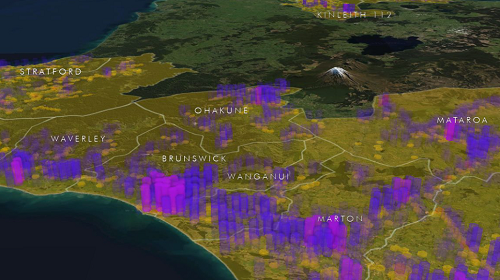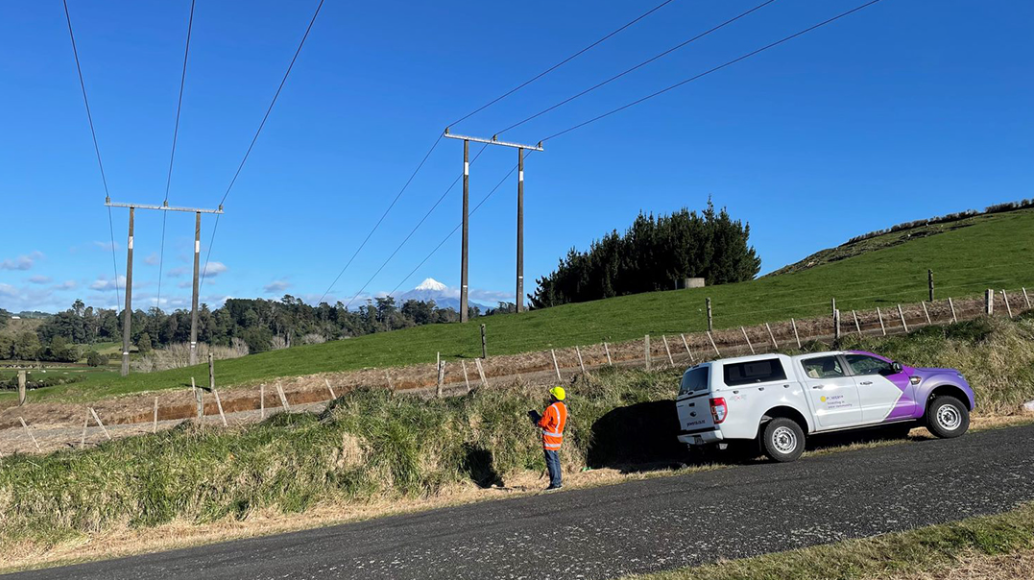Indepth network view

We’ve developed a smart mapping tool that gives us a layered bird’s eye view of what’s happening across our vast electricity network for the benefit of our customers.
Using Esri ArcGIS, the tool helps us effectively plan what electrical equipment needs to be replaced, ensuring we continue to be prudent asset managers – repairing or replacing the right equipment at the right time, in the right locations.
Ultimately, this tool will help us identify potential safety issues and equipment faults before they can impact our customers.
“We needed to build a unique smart tool that would enable us to visualise what was happening across the network,” Powerco Overhead Assets Fleet Manager Ken Pattie says.
“Identifying and prioritising which overhead lines need to be replaced is not a straightforward task. Whether or not to renew a line or associated equipment, such as crossarms, poles and fuses, is only loosely related to the asset’s age.
“It’s also very dependent on other factors such as the quality of the material, the environment it’s in, past maintenance practices, visual assessments of condition, and fault history.”
In the past, all this information was kept on spreadsheets. Now, the overhead renewal planning tool allows us to see what was previously hidden in data from multiple sources and use it to make our network safer and more reliable.
New information about the network is routinely being added to the tool to inform our decision making and planning.
Benefits
• Our engineers now have a more indepth and accurate knowledge of the equipment on our network. They have interactive maps that show the predicted health score of different parts of the network, which means we can plan and invest more effectively.
• Our renewal work has quadrupled since having the tool. Previously we would carry out about 30 overhead renewal projects (poles, conductors, crossarms) annually. With greater insight, now it’s about 120 projects annually.
• The new insights are helping us shape our renewal strategy which will, in time, help improve safety and service levels for our customers.
How it works
The smart mapping tool uses the data we have of our network to produce visuals that show us which parts of the network need replacing. Essentially, the tool divides the network into hexagons on a map. The tool then assigns a score to each hexagon, based on weighted calculations which include:
• Past faults
• Age of assets
• Condition of assets as a score
• Known problem asset types
The resulting scores enable the visualisation of the network condition as a heat map (see picture above of a heat map of the Taranaki-Whanganui region).
“The hexagonal heat maps give us a large-scale overview,” says Powerco senior GIS specialist David Haberkorn.
“They show us hot spots where there were assets with many defects. This guides our engineers to where there were potential project areas. They can identify these hot spots and zoom in for further investigation.”
Viewable layers include assets (wires, poles, transformers), faults, conditions, asset health, and environmental factors. It’s also the tool we use to plot vehicle vs pole incidents in an effort to design safer public roads.
It also enables us to see what had been previously unseen, including the number of customers potentially affected by equipment failure, as well as asset risk, allowing renewal planners to see where investment will provide the greatest benefits in improving public safety and supply reliability.

Above: The project extensively used devices in the field to collect asset data.
